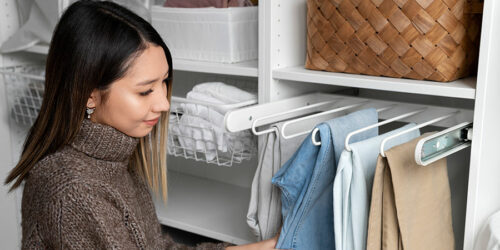Decluttering your home isn’t easy. But Natalie Schrier, a professional organizer and owner of NYC-based Cut The Clutter, started her business more than seven years ago to help people accomplish just that. Her mission is to bring order into the lives of people who don’t have the time to do so themselves, don’t know how to, or are just completely overwhelmed by the thought.
If you fall into any of those categories, you’re not alone. In fact, I fit into all three. So I asked Natalie to share some of her best organization tips for decluttering your home, once and for all.
She started with the caveat that there is no “typical” client. While she was ready to give me a few general rules of thumb to go by, she made sure to point out that organizing is a very personalized, custom experience. So while you’ll find a foundation here, feel free to — and actually be sure to — tailor these tips to make sense for your home, life, and style.
1. Purge.
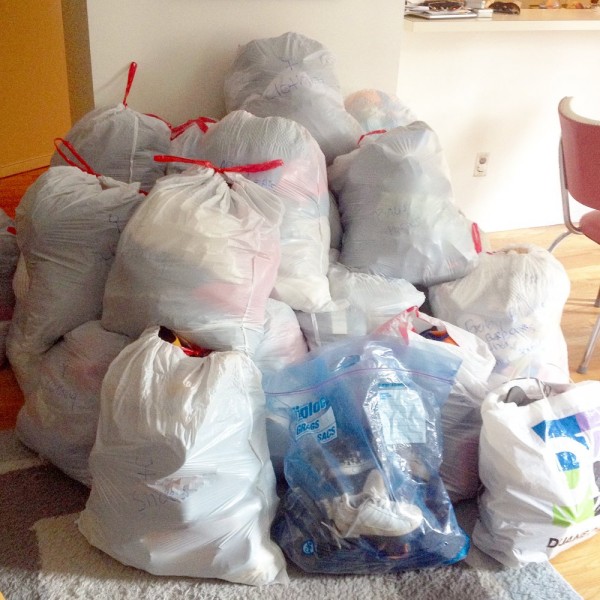
The word that Natalie said most during our conversation was … PURGE. She wants you to permanently get rid of items that no longer serve a purpose. It’s the essential first step in organizing any space, as it cuts down on items that then need to be stored.
Quite simply, it’s best to not allocate space for your items until you know exactly how many you’re putting away. For instance, once you’ve purged your old spices, assess the ones you still have and see where they fit best in your kitchen.
Clothing that is too small or too large can and should be donated. Items that one day are filled with sentiment (like my daughter’s daily scribbles) can the next day be put in the trash (just don’t let her see!). Purging regularly is Natalie’s key to ensuring minimal buildup of unnecessary items.
Like Mary Helen Rowell who lives happily in a 90-square-foot apartment, Natalie recommends following the “one in, one out” rule: If you buy a new product, get rid of an old version you have, making the number of items you own stay constant. This applies to clothes, shoes, jewelry, kitchen appliances, and pretty much everything else in your home, including tech gadgets.
Interestingly, while technology has helped us streamline many things, Natalie credits it with making purging harder due to constant upgrades of products that come with wires, chargers, and more.
Some of her clients are hesitant to part with these accessories, and most have a box or drawer full of so many cables that they don’t know what product they even came with in the first place.
Labelling wires prior to storage can help solve the anonymous tech clutter. This way when you upgrade, you can also easily locate the right parts that go with the item you are getting rid of, thanks to your newly-implemented “one in, one out” rule!
2. Keep items in the same category in one place.
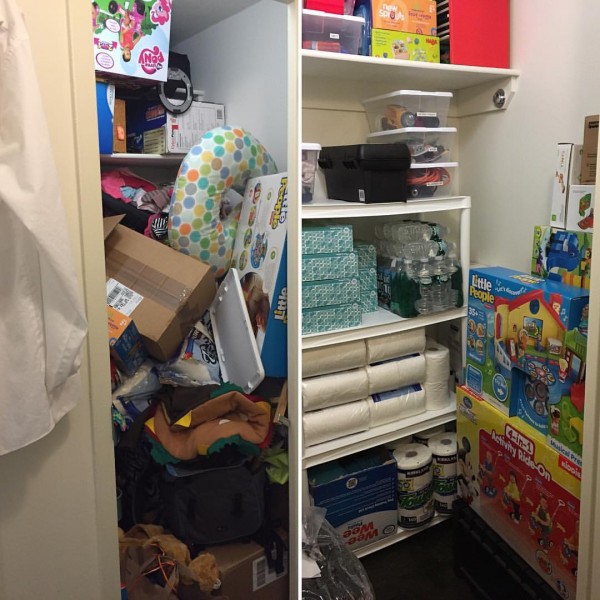
When deciding where your things should live, always put categories of items in one place, keeping all like items all together.
A recent client of Natalie’s had wine glasses in four different cabinets, so she knows firsthand that this doesn’t come naturally to some people. But without everything being grouped, it’s impossible to know what you own, which is the first step in being able to tame it all.
3. Put things back where they belong.
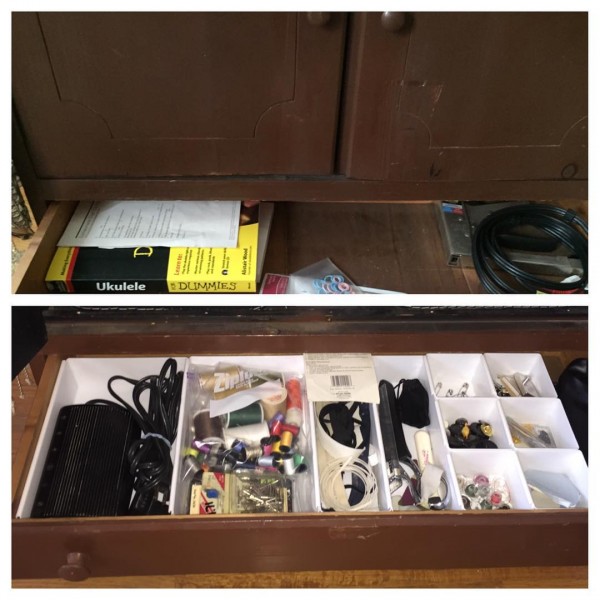
If you take out your flat iron, a roll of tape, or your corkscrew, put it back in the same place when you’re done. While this sounds like common sense that our parents always reminded us to do as kids, I know I often leave things out on surfaces. Or in other rooms for the sake of ease, constantly creating mess.
Natalie says that the consistency of putting things back where you got them creates good patterns, helping lead to overall better organizational behavior. A good rule here is to never leave a room empty-handed. Find something to put back in its rightful place whenever you’re on the move.
4. Don’t buy storage solutions until after you purge and assess your belongings.
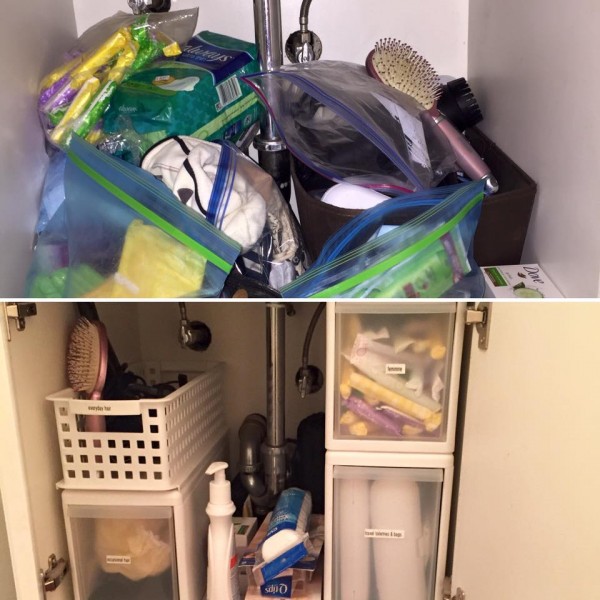
Natalie says that a big mistake people often make is preemptively purchasing storage solutions to contain or organize their possessions. This is backwards, as you don’t know what you’ll be storing until after you purge the things you don’t need and assess what’s left.
Then, and only then, is it time to decide what type of storage container or organizing product will best serve your needs. This will help you avoid purchasing a large plastic bin to store all of your mementos from your last boyfriend. What you really should do is get rid of that stuff anyway, or at least whittle it down to a small shoebox-sized container.
5. Store infrequently used items out of your way.
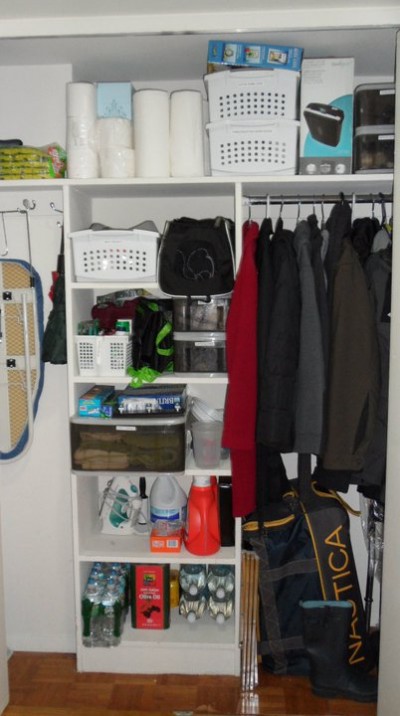
Another simple-but-highly-effective organizing tip: Store infrequently used items out of your way, and make the items you use most frequently more easily accessible.
So if you have holiday decorations, out-of-season clothing, a bike, and extra art supplies that you don’t use right now, store them in MakeSpace.
And instead of putting cleaning supplies up on the top shelf of your linen closet, where you need a step stool to reach them, keep a small broom and dustpan, all-purpose cleanser, and some paper towel and toilet paper rolls right under the sink, where you’re able to grab them as soon as they’re needed.
As we wrapped up our chat, I asked Natalie specifically for one organizing tip for the kitchen and one for our least favorite place to clean (the bathroom):
6. Make being organized easy for yourself.
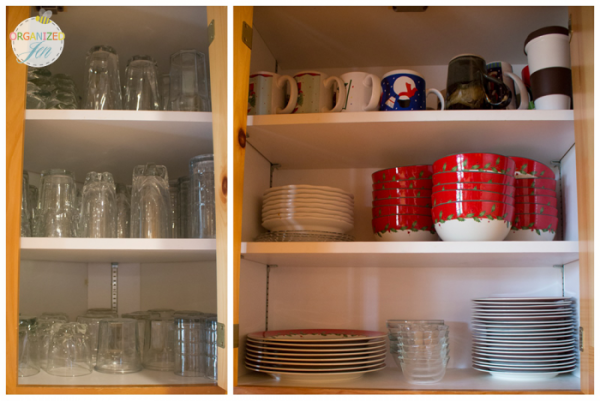
Store your most often-used plates and glasses in the cabinet closest to the sink or dishwasher, because that makes it so much easier to put them away after washing. Granted here in New York City none of us have such spacious kitchens that anything is too far of a reach, but still, not having to do an awkward yoga pose to put away your daily dishes definitely makes sense.
7. Purge your medicine cabinet.
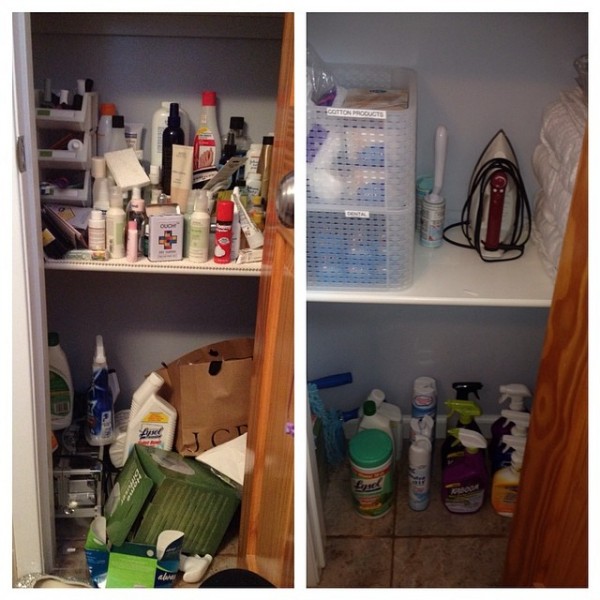
Our buzzword “purge” came up again here, as everyone should sort through their vanity and medicine cabinet a couple of times per year. Then you can dispose of expired items or the products that you no longer use.
8. Store bathroom, grooming, and cleaning supplies in a shoe organizer.
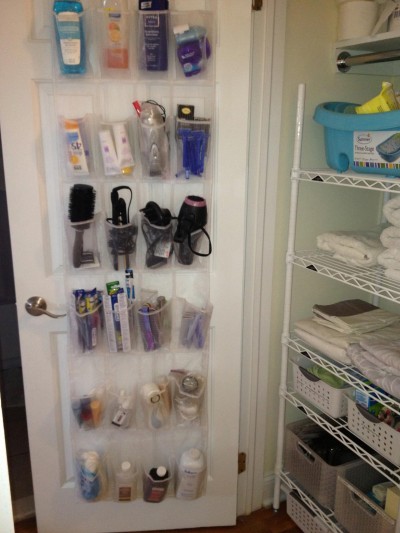
If you want more space in your bathroom (and hey, who in NYC doesn’t?), hang an over-the-door shoe organizer with clear pockets on the back of your bathroom door or linen closet door. These are great for storing just about anything, including your toiletries, flat irons, brushes, cleaning supplies, and hair dryer.
Natalie’s organization advice sounds so manageable, and I can’t wait to put some of her tips into action. How about you?
This article was written by Lesley Neadel, a freelance writer from New Jersey who lives with her husband and two daughters in a two-bedroom apartment, and constantly seeks advice on how to make the most of their space.





